Midnight Limited, the brisk 1940 Monogram Pictures release directed by Howard Bretherton, may be cataloged in the traditional register as a mystery film, yet it offers a textured viewing experience that will appeal to anyone searching for a film noir movie sensibility wrapped in a compact runtime. This review and analysis approaches Midnight Limited both as a period piece of studio-era economy filmmaking and as a narrative specimen that intersects with motifs frequently celebrated by students of noir. The author of this piece, a classic cinema critic and researcher, draws upon the film itself and the film's Wikipedia record to offer a close reading of its plot, production context, characters, visual strategies, and enduring curiosities.
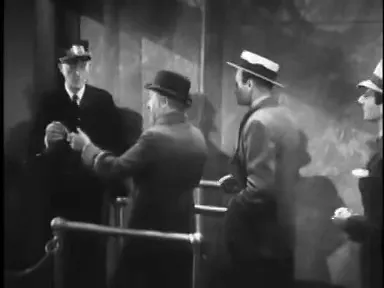
Opening Act: Premise, Setting, and the Promise of Danger
At just sixty-two minutes, Midnight Limited wastes no time. The film opens in medias res on the bustling platform and within the cramped corridors of an overnight train. The railroad locale is an archetypal setting for compact mysteries, a confined world where strangers are forced into proximity and secrets can be transported as easily as luggage. The action revolves around a robbery that targets a diamond merchant and a gambler, a crime that immediately establishes stakes both material and personal.
From its first scenes the film projects a tension that will be tested and extended across its brisk running time. The boarding sequences, the reservational details, and the various passengers’ small talk are not filler but functional exposition—laying out the roster of characters, the proximity of compartments, and the vulnerabilities inherent in moving valuable cargo while in transit. The setup is deliberately procedural: a theft occurs, the railroad's private police begin an investigation, and a motley cast of suspects and witnesses is assembled.
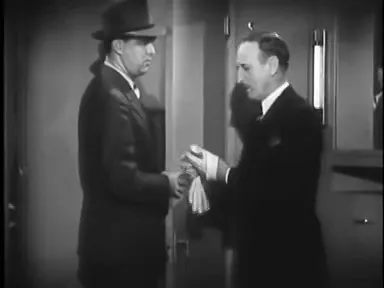
The Railroad as Narrative Device
The train provides Midnight Limited with something more than location: it supplies narrative logic. The carriage carriages create natural barriers and opportunities for misdirection—the closed compartment, the dimly lit corridor, the emergency cord, the baggage car—each element is exploited to manufacture suspense. The staircase-like structure of a train, from baggage car to engine, also helps the film manage a compact ensemble, forcing character interaction without extravagant exposition.
Fans of the film noir movie tradition, even if they approach Midnight Limited knowing it is not explicitly labeled noir on reference sources, will recognize the same proclivity for urban claustrophobia, moral ambiguity, and the interplay between light and shadow. Those elements surface through staging, blocking, and the film’s dramatic pivot points: the robbery, the discovery of stolen goods, and the murder of a detective—an event that raises the stakes dramatically.
Plot Overview: A Tight Engine of Suspense
Midnight Limited’s plot is economical and methodical. The prologue establishes the theft: papers and jewels are taken in the dim corridor of the Midnight Limited. The theft itself is staged with brief, sharp beats that heighten confusion: flashes of light, a slammed door, the sharp command "Don't stick your head out this door," and a thief who disappears as if into the night. The film pivots quickly to the railroad detective force led by Capt. Harrigan and Val Lennon, the film’s investigator with a taste for hands-on detectivecraft.
The second beat introduces the stakes more fully. Joan Marshall, played with earnestness, reports that deeds—papers that represent her family’s claims—were stolen. The urgency of the case is personal and explains why Miss Marshall insists on involvement: those documents are the only proof of an inheritance and represent everything she and her mother possess. This fuels a narrative logic in which the detective cannot treat the theft as merely material; it is also a moral problem. The murder of detective Brady transforms the case into a manhunt.
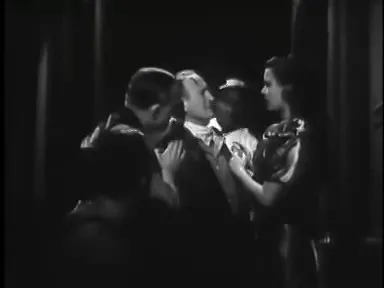
Investigation: Procedure, Personnel, and the Professor
Midnight Limited constructs its investigation like a miniature police procedural. The film’s investigative protagonists comb through passenger lists, interview crew and passengers, and trace common threads. The railroad detective force uses lists, timetables, reservation records, and cross-comparisons to find overlaps between the victims. Inevitably, this leads them to one curious figure: a professorial, inebriated-seeming traveler who has traveled on the same train on both occasions of the robbery.
Here the film’s economy is especially evident: instead of a labyrinthine plot with multiple convoluted subplots, Midnight Limited compresses suspicion into a handful of leads—a professor-like figure who seems in the wrong place at the wrong time, a reservation clerk with an odd degree of curiosity, and a string of passengers who may or may not be using aliases. The film’s tightness is a virtue: audience focus is directed to careful, credible detective work reflecting the era's fascination with method and deduction.
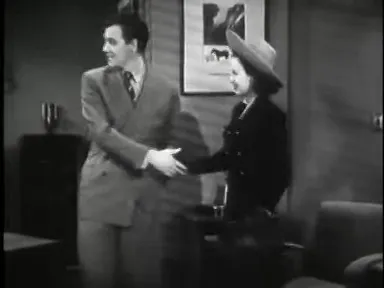
Characters and Performances
The cast, as recorded in the public record, is led by John 'Dusty' King as Val Lennon and Marjorie Reynolds as Joan Marshall. George Cleveland plays Professor Van Dillon, the oddly eccentric traveler, while Edward Keane appears as Capt. Harrigan. Monte Collins offers a memorable turn as Abel Krantz and I. Stanford Jolley appears as the shadowier presence Frenchie. The ensemble is modest but functional; their performances suit the fast rhythm and stage-like direction of Bretherton.
- Val Lennon (John 'Dusty' King): Lennon is the pragmatic detective, a blend of charm and procedural insistence. He is the film’s protagonist and methodical mind—the one who combines intuition with discipline.
- Joan Marshall (Marjorie Reynolds): Joan represents both the emotional stake and the moral center. Her desperation to recover family papers humanizes the case and pushes Lennon into considering more personal consequences.
- Professor Van Dillon (George Cleveland): The so-called professor is a pocket of comic relief and ambiguous utility—affable, seemingly unimportant, yet oddly present at both crimes.
- Capt. Harrigan (Edward Keane): Harrigan provides institutional authority and procedural resources; his temperament is patient but realistic about the constraints of railroad policing.
The performances are concise, reflecting the film’s studio-era craft: expressionistic reactions are tempered by naturalistic dialogue delivery. No single performance overwhelms its frame; the cast functions like a precision tool—each actor conveying information necessary for the forward momentum of the plot. This collective restraint is one reason Midnight Limited reads like an efficient small-scale detective piece rather than a personality vehicle.
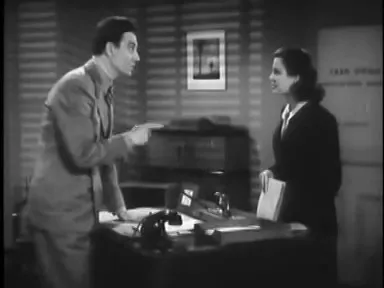
Dialogue: Efficiency Over Flourish
Dialogue in Midnight Limited favors function over flourish. Exchanges are compact and often expository by design—questions that pull out alibis, responses that hide or reveal only as necessary. This fits with a film noir movie’s traditional lean toward clipped, loaded lines—though Midnight Limited prefers to let actions and procedures speak at least as loudly as one-liners.
“Papers that mean everything to mother and me.”
Lines such as the one above are pivotal: they convert a small theft into a moral emergency. Mid-century audiences would have recognized the social valence of such declarations—where documents stand in for property, status, and social security. The film leverages such beats to make the investigation socially resonant, not merely a puzzle to be solved.
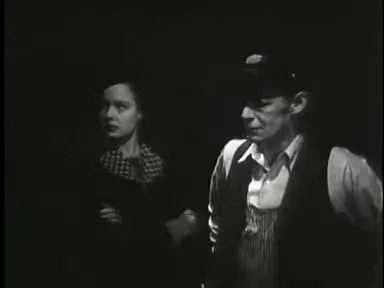
Visual Strategy and Cinematography
Harry Neumann is credited with cinematography on the film, and his camera work supports the film's focus on containment and mood. Midnight Limited leans into low-key lighting in the corridors and vestibules—a stylistic choice that creates shadowed pockets and conceals potential exits and entrances. These visual decisions align with the sensibilities that many associate with a film noir movie: stark contrasts, claustrophobic framing, and the use of shadow as narrative camouflage.
Shots of closed doors, overhead corridors, and the rhythmic movement of the train provide a cinematic grammar of entrapment. The camera often privileges the compartment door as a frame within a frame, a recurring visual metaphor: closed doors hide motives, and opened doors threaten revelation. These motifs recur through the film’s arc and culminate in the final mechanical solution that exposes the killer's method.

Editing and Pacing
Edited by Russell F. Schoengarth, the film’s pacing is taut. Cuts favor continuity and smooth momentum over experimentation; sequences are assembled to ensure clarity of cause and effect. Schoengarth’s approach serves the film’s structural integrity: each cut serves the logic of discovery. Tension is increased not by elongated scenes but by quickening the rhythm of discrete investigative beats—searches, interviews, revelations, and confrontations.
The result is an economy of suspense: Midnight Limited never pauses for scenic indulgence. It is a compact, forward-pushing experience where each minute carries weight. For rarefied fans of a film noir movie tempo, that briskness can be refreshing—the film’s urgency never allows the mystery to become muddled.
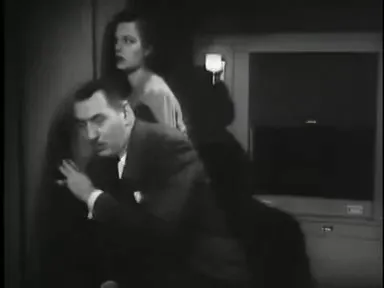
Thematic Observations: Deception, Class, and Mobility
While Midnight Limited is not a sweeping philosophical text, it gestures toward themes that resonate in noir discourse. There is an ongoing preoccupation with the instability of identity—passengers who might be traveling under false names, a professor who is more involved than he seems, and crooks who disguise themselves by posture, clothing, and feigned incompetence. The railroad becomes a metaphor for social mobility and its perils; movement across space is paralleled by movement across social boundaries.
Another theme is institutional responsibility. The railroad police treat the theft with a mixture of duty and limitations—their resources are finite and the jurisdictional borders of rail travel complicate a conventional investigation. This tension echoes an institutional skepticism often found in a film noir movie: authority exists, but its reach is imperfect, and its methods can be fallible. The narrative therefore relies on improvisation—plainclothes tactics, decoys, and personal risk-taking—an uneasy alliance between official procedure and individual ingenuity.
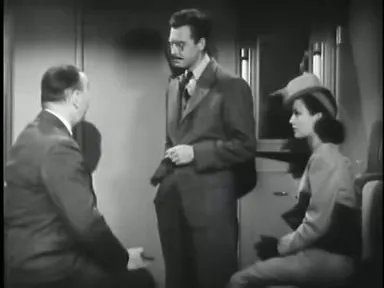
Moral Economies and Material Stakes
Material stakes are explicit in Midnight Limited: diamonds and cash represent immediate temptation and motive. But the film also concerns itself with more intangible losses—peace of mind, inheritance, and the illusion of safety while traveling. These anxieties make the film’s emotional chord resonate beyond the heist; it becomes a meditation on trust in a modern, mobile world.
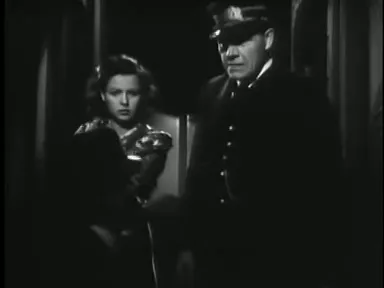
Set Pieces and Key Scenes
Certain sequences anchor the film’s momentum and reward close attention:
- The Initial Robbery: Quick, functional, and disorienting. The thief uses darkness and the corridor’s dim lighting to vanish. The robbery's economy—flashlight, door, grabbed bag—sets the procedural tone.
- The Murder of Brady: A narrative pivot. The death of a detective raises stakes and reframes the robbery as violent and dangerous, forcing more aggressive investigative measures.
- The Professor’s Interrogation: A scene of vested curiosity: the professor claims to be a professional traveler paid to deliver items, providing a theatrical mix of humor and ambiguity.
- The Trap and the Resolution: The film’s final movement is inhabited by tactical cunning: planted guards, staged decoys, and an ultimately effective unraveling of the killer’s method.
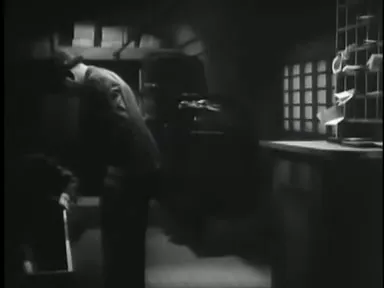
Production Context: Monogram Pictures and Studio Constraints
According to public records, Midnight Limited was produced by T.R. Williams and distributed by Monogram Pictures, releasing on March 20, 1940. Monogram specialized in low-budget, fast-turnaround features; Midnight Limited is emblematic of that studio's strength—capable technicians, dependable character actors, and a capacity to produce entertaining, reliable genre pictures on economical schedules.
Monogram’s business model rewarded efficiency and clarity. Midnight Limited stands as a demonstration of how resource limits can sharpen cinematic focus: rather than diffuse attention across multiple subplots, the film concentrates on a few germane details, thereby delivering a satisfying arc within an hour. Fans of a film noir movie pedigree will recognize that studio constraints often encouraged lean storytelling that foregrounded mood and schematics over lavish spectacle.
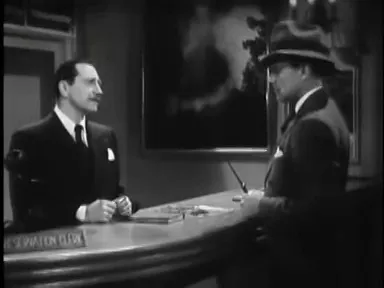
Technical Credits Recap
- Director: Howard Bretherton
- Screenplay: Harrison Carter and Charles Williams
- Producer: T.R. Williams
- Cinematography: Harry Neumann
- Editing: Russell F. Schoengarth
- Production Company: Monogram Pictures
- Running time: 62 minutes
- Release date: March 20, 1940
These credits show a compact production team, typical for Monogram’s output. The craftspeople involved were experienced studio hands who knew how to realize a story quickly and effectively. The result is a film whose strengths lie in discipline and a directness that suits its brisk plot demands.
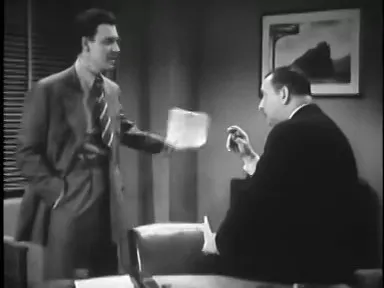
Comparative Notes: Noir Elements and Genre Positioning
While Midnight Limited is recorded historically as a mystery film, it shares tropes commonly associated with a film noir movie: low-key lighting, moral ambivalence, urban mobility as a source of danger, and a narrative focus on criminal networks operating within ordinary spaces. The film does not luxuriate in the fatalism or the femme fatale complexity associated with many canonical noirs, but its moral geography—one in which ordinary travelers conceal extraordinary motives—overlaps with noir sensibilities.
Compared to heavyweight noirs of the mid-1940s, Midnight Limited is leaner, less stylistically ornate, and more mechanistic in plot. Yet that very lean quality can provide clarity; the film’s linear investigative logic and its compact surprises proceed with the tautness admired by fans of a film noir movie’s procedural side. In short, Midnight Limited is worth attention for those who study the noir continuum as much for its aesthetic as for its structural kinship.
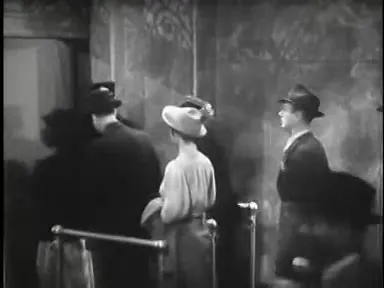
Legacy, Accessibility, and Why It Matters
Midnight Limited may not occupy the same canonical space as the major studio noirs, but its importance lies elsewhere: it exemplifies how low-budget programmers contributed to genre innovation by condensing narrative techniques into tight, accessible forms. The film is a useful artifact for students of genre and studio history because it demonstrates the ways in which economical production methods could still yield engaging mysteries.
Because it was produced by Monogram and released as a short, direct entertainment piece, Midnight Limited likely reached audiences who desired quick thrills; its DNA is evident in later procedural television and cinematic detective work. For modern viewers, the film provides a compact lesson in constructing narrative momentum on a budget and offers a clear demonstration of the train-as-stage tactic that noir and crime cinema reuse again and again.
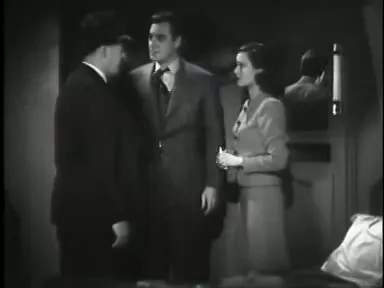
Availability and Scholarly Use
Public records indicate Midnight Limited is available in the public domain and appears in archival repositories. This accessibility has pedagogical value: students can readily view and analyze the film for its framing, pacing, and performative economy. Scholars interested in the intersection of studio economics and genre expression will find Midnight Limited a fruitful case study.
Concluding Assessment
Midnight Limited is a work best appreciated on its own terms: a 62-minute mystery driven by competent direction, functional performances, and a procedural core that keeps the story moving. It includes elements that will satisfy a viewer drawn to the aesthetic or thematic atmosphere of a film noir movie while retaining its identity as a mystery produced within Monogram Pictures’ efficient system.
The film’s virtues are restraint, focus, and a willingness to let method propel revelation. Its limitations—thin character development for certain supporting players and a lack of stylistic excess—are offset by the clarity and immediacy of its investigative story. For the critic and the viewer alike, Midnight Limited rewards attention: its carefully staged beats and its final reveal demonstrate how a disciplined approach to plotting and staging can produce satisfying dramatic results without budgetary excess.
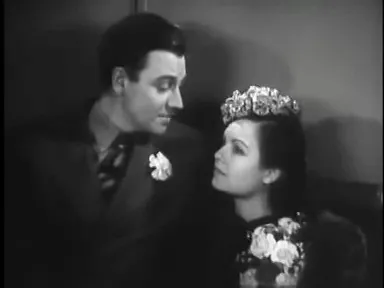
Recommendation
Those intrigued by genre history, the train-bound mystery, or the intersectional qualities of small-studio productions should seek out Midnight Limited. It is recommended to viewers who enjoy a brisk detective narrative and who appreciate the ways in which a film noir movie aesthetic can be translated into concise, efficient storytelling. Midnight Limited stands as a testament to studio-era craftsmanship and remains an instructive, entertaining example of how suspense can be manufactured with economy and clarity.
Credits and Further Reading
For researchers and viewers who wish to track credits and historical release information, the following production facts are useful: Midnight Limited was directed by Howard Bretherton, written by Harrison Carter and Charles Williams, produced by T.R. Williams, and released by Monogram Pictures on March 20, 1940. The cast includes John 'Dusty' King, Marjorie Reynolds, George Cleveland, Edward Keane, Monte Collins, and I. Stanford Jolley.
For further context, readers may consult archival entries and film databases that index the film’s production and release history. Midnight Limited is a compact artifact of 1940s studio-era genre programming and rewards those who examine it for craft, pacing, and the ways in which a film noir movie mood can be implied even within a strictly “mystery” form.
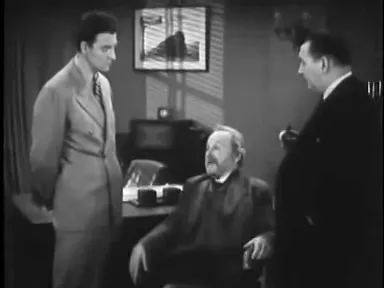
Final Note from the Critic
Midnight Limited is the kind of film that illustrates how boundaries between genres and traditions—mystery, noir, procedural—can blur. While its record classifies it as a mystery, it houses enough shadows, moral ambiguity, and urban unease to interest devotees who approach a film noir movie as a body of stylistic and thematic practice rather than a rigid genre label. This compact, economical film remains an instructive piece for both enthusiasts and scholars: economical, efficient, and, ultimately, satisfying.
For those who collect and study classic cinema, Midnight Limited is recommended viewing: an accessible, instructive piece that offers an hour of disciplined storytelling and a vivid reminder of the era’s craftsmanship.
